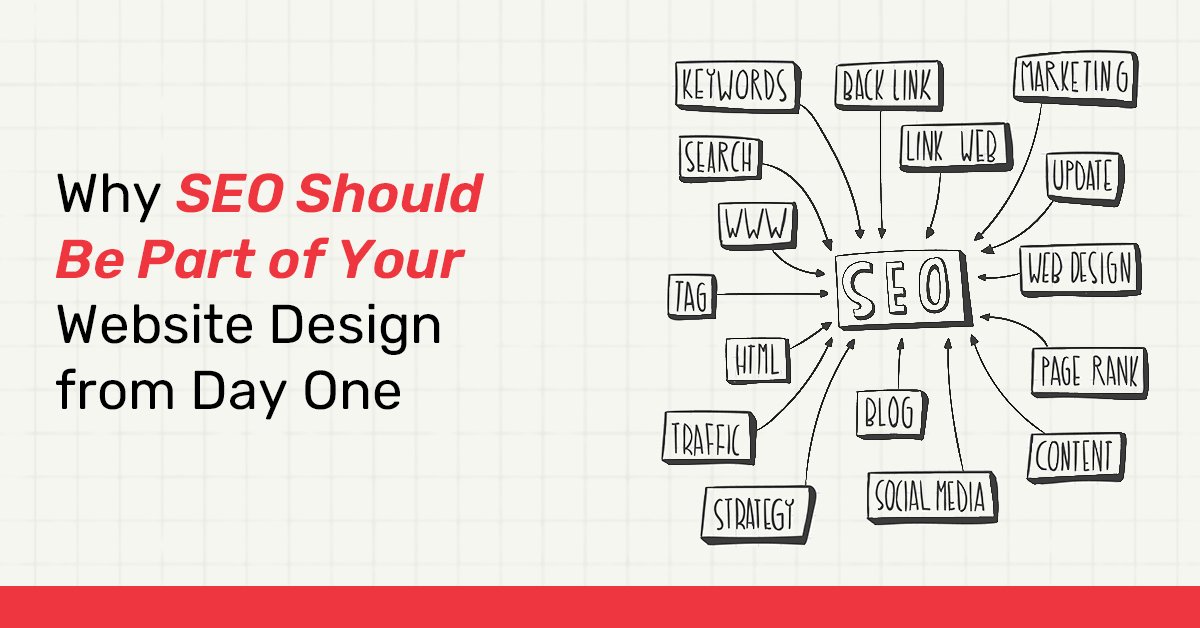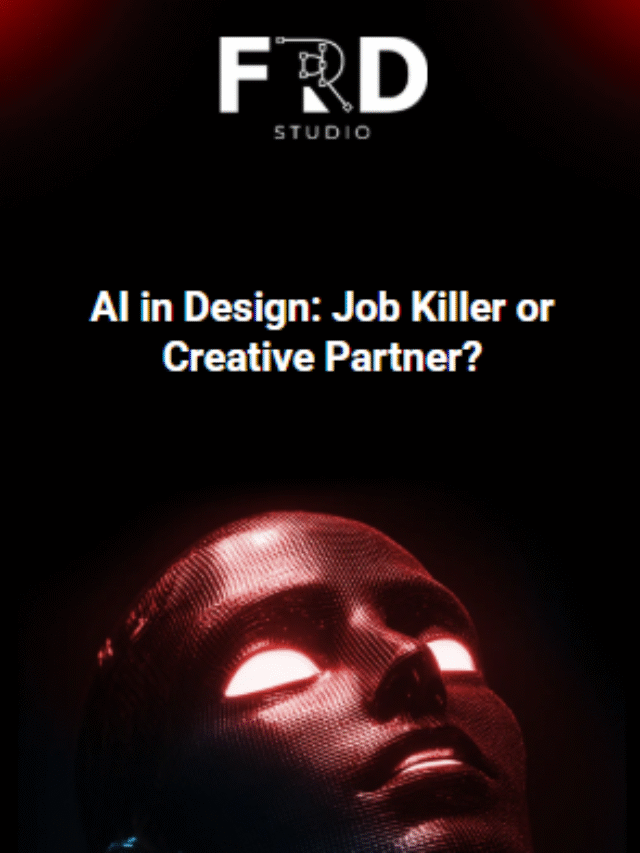In the digital environment of the present day, companies of all sizes must have their own website – it is an essential prerequisite, not just one of the nice things helping you move forward. However, having a website does not cut the mustard alone. To stand out from the pack and really reach your audience, your website has to be easy to find. That’s where Search Engine Optimisation (SEO) comes in. Guard your wallet and look out for expensive marketing schemes. Be smart with your money!
Most businesses tend to view SEO as an afterthought, something to consider only after your website is live. This is like constructing an awesome store in a back alley with no signage; it may be great on the inside, but nobody will know that. Adding SEO from the beginning helps get your website noticed in the digital world.
So, why is it so important to add SEO to your website design?
1. Laying a Strong Foundation for Visibility:
Your website is like a house. You would not want to build a roof on it before laying the foundation correctly. Similarly, if included from the start, SEO can assist you in constructing a website that is search engine-friendly. That includes layout, navigation, and content organisation decisions that can seriously limit how easily search engines can find and understand your site.
Moreover, when you take an SEO strategy into account on the design level, you ensure your site will be structured as it should be, and internal links will work as they must. These elements not only improve usability but also signal to search engines which sections or pages you consider most important and how they relate to each other. This strong SEO allows you to rank higher in search results for relevant keywords.
2. Enhancing User Experience (UX):
The websites with the highest ranks on search engines like Google are those that provide their users with the best experience. This depends on the speed of a page, mobile-friendliness, navigation, and content factors that influence how well a site ranks. This way, when SEO is integrated into the core design process, these UX points are well considered from the beginning.
This means things like future planning for a responsive design that ensures your site is viewable on both small phone screens and large monitors or tablets (note: mobile users make up half of all web traffic these days). You can optimise the load speed even further by designing images of the right size before loading them onto a page, which will help improve bounce rates and keep users engaged longer.
Intelligent navigation and strong calls to action based on keyword research and an understanding of user intent will successfully guide visitors through your site, landing them where you want.
3. Organising Content for Both Search Engines and Users:
Without high-quality content, any SEO strategy is dead on arrival (DOA). With SEO in mind from the beginning, you can help choose what kind of content is necessary and which words should be emphasised under the main content based on how the information will appear to your visitors.
This can be achieved by identifying the phrases your target audience uses to search for information related to your products (you will need to conduct keyword research early on as well). This research will inform actual page titles, meta descriptions, headers (H1, H2, etc.), and the content strategy for all those pages. Planning your page breaks using appropriate headers not only makes it easy for humans to understand but also helps search engines identify and grasp the context of your content.
4. Creating a Mobile-First Website:
A responsive website is an essential aspect of doing business in a mobile-centric environment, as it performs smoothly on mobile devices. Google employs a mobile-first indexing strategy, crawling and indexing the mobile version of your site first.
At the design stage, incorporating SEO means starting off with mobile-friendliness. This includes a mobile-friendly layout, appropriately sized images for mobile consumption, speed considerations on 3G networks and above, and a cross-device user experience. When you focus on mobile during the design process, you’re embedding best practices for SEO right into your site from the beginning.
5. Streamlining the Development Process:
This is why treating SEO as a mere afterthought usually comes back to bite you with expensive rewrites much later. And when your site is finally up, there are always significant redevelopment projects to revisit, improve visuals, or address navigation problems. This can delay your release and incur additional costs.
SEO simplifies development. Feeding in SEO right from the onset of development helps reduce the developer workload. Every decision I make has an SEO consideration, from how the site is laid out to how my content is organised. This collaboration among designers, developers, and SEO ensures that the website is crafted with search engine optimisation in mind, providing quality over time, which obviously saves you both money and resources.
6. Enhancing Website Accessibility:
It’s important in SEO now more than ever because website accessibility helps people with disabilities navigate your site. Search engines recognise that making the online experience more accessible is hugely important.
7. Developing with Accessibility Guidelines:
The advantage of SEO in web design is that accessibility guidelines can be established from the outset if you combine SEO with web design. To achieve this, it must be done correctly from the beginning with HTML markup, appropriate alt text for images, good colour contrast, and ensuring site functionality through keyboard navigation.
By being accessibility-aware from the beginning, you reduce the likelihood of future issues, create a better experience for your larger base of users, and appear more favourably to search engines.
8. Future-Proofing Your Website:
The world of SEO will always be evolving.
When you have a strong SEO foundation in place for your site, it means that you can always adapt to changes.
A well-designed website with content that is well-optimised and built for user experience will perform much better when algorithm updates occur, as your website will remain solid. Incorporating SEO right from the start is similar to making a smart financial commitment to your long-term online success and sustainability.
9. Avoiding Costly Rework and Redesigns:
Now, we’ve briefly covered how ignoring SEO considerations in your initial design work can lead to a lot of rework, sometimes requiring a complete redesign. This drains your finances, but it also drastically shifts your online standing overnight.
If you integrate SEO into the very structure of your website from the beginning, you can prevent all of this from happening. You’re developing your website utilising various search engine platforms as your basis to avoid this pain, including the search engine algorithms. Hence, in the future, it will make you an affordable design agency in India.
10. Gaining a Competitive Advantage:
In today’s internet, every advantage you gain could be very helpful for your edge. Websites that take SEO seriously from the start will have an easier time rising in search result ranks (which means more organic traffic) and achieving their business goals.
Designing with an SEO mindset gives your website a head start. This allows your target audience to find you easily on the internet, which can result in more qualified leads and increased visibility for your brand; these aspects make you the best branding agency in India.
11. Measuring and Tracking Performance from the Outset:
By including SEO in your project from the start, you can define key performance indicators (KPIs) and add tracking as soon as your site is live.
That way, you can easily monitor your SEO performance, identify areas for improvement, and make informed decisions to enhance your search engine ranking and organic traffic.
Having such monitoring systems in place upfront provides you with important data regarding the overall performance of your webpage, enabling you to continuously optimise the SEO strategy that works best for your graphic design organisation.
Conclusion:
Considering SEO as your website’s last touch-up is an inefficient tactic. With SEO applied from the very beginning of your site’s design, you ensure that critical elements promoting online success are already integrated into the strategy. This way, your site is easily found and fully search engine optimised from the start. FRD Studio, an India-based design agency, leverages SEO strategies to reach the intended audience.
At each step of the design and development process, think of SEO; take this approach, and you can save time, money, and effort. It will also help you gain a competitive edge and achieve your online business goals. Instead of building your business in a hidden niche, find a place where web surfers can easily discover and visit you. Adding a touch of search engine friendliness right from the outset will keep them coming back often and soon yield great returns on investment.












